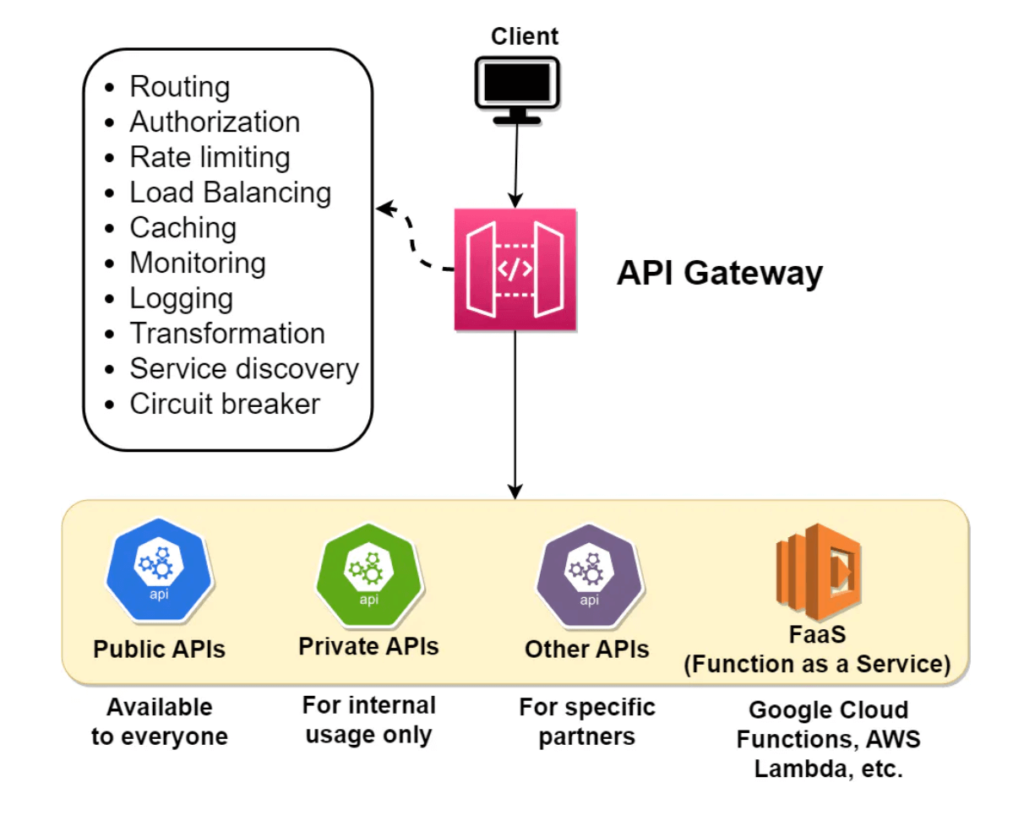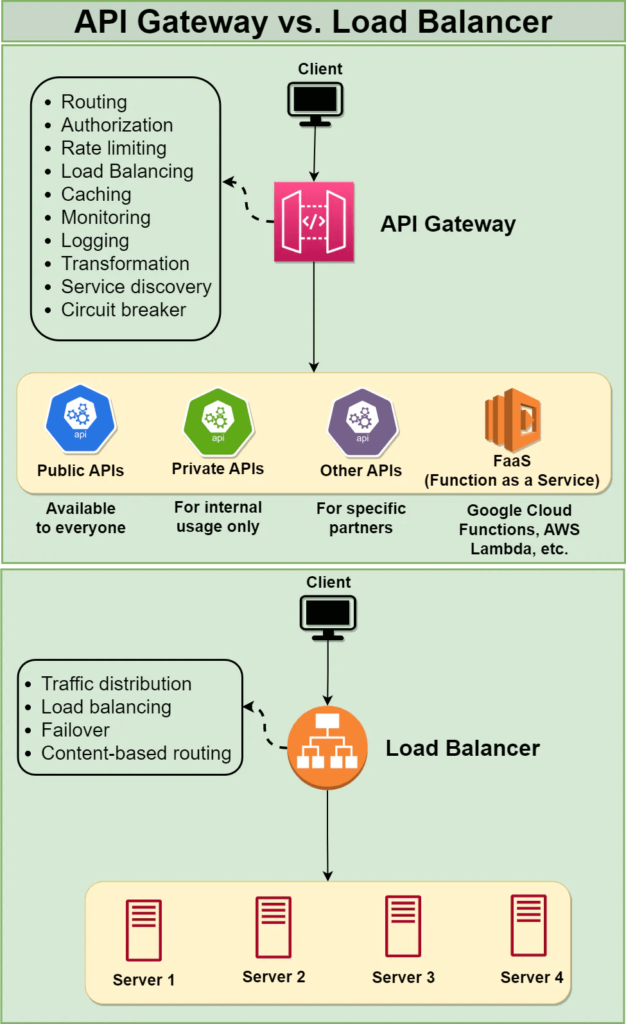What is API Gateway
In this tutorial, we are going to discuss about what is API Gateway in System design. In system design, an API Gateway is a crucial component responsible for managing, securing, and optimizing communication between clients and the backend services of a distributed system. It plays a crucial role in microservices architectures, distributed systems, and modern web applications.
An API Gateway is a server-side architectural component in a software system that acts as an intermediary between clients (such as web browsers, mobile apps, or other services) and backend services, micro services, or APIs. The API gateway pattern is recommended if you want to design and build complex or large microservices-based applications with multiple client applications.

Its main purpose is to provide a single entry point for external consumers to access the services and functionalities of the backend system. It receives client requests, forwards them to the appropriate micro service, and then returns the server’s response to the client.
The API gateway is responsible for tasks such as routing, authentication, and rate limiting. This enables micro services to focus on their individual tasks and improves the overall performance and scalability of the system.
Here’s how an API Gateway fits into system design and its key functions:
1. Centralized Entry Point
The API Gateway acts as a single entry point for clients to access various services within the system. Instead of directly interacting with individual micro services or backend services, clients send requests to the API Gateway, which then routes them to the appropriate services.
2. Request Routing and Aggregation
The API Gateway routes incoming requests to the corresponding backend services based on predefined rules, paths, or parameters. It can also aggregate multiple requests into a single request to reduce chattiness and optimize network traffic.
3. Protocol Translation
The API Gateway supports protocol translation, allowing clients to communicate using different protocols (e.g., HTTP, WebSockets, gRPC) while internally using a standardized protocol for communication with backend services.
4. Load Balancing
The API Gateway can distribute incoming requests across multiple instances of backend services to achieve load balancing and ensure high availability and scalability. It can use various load balancing algorithms to distribute traffic evenly across backend servers.
5. Security and Authentication
The API Gateway provides a centralized location for implementing security measures such as authentication, authorization, rate limiting, and encryption. It can authenticate clients, validate access tokens, enforce access controls, and secure communications using SSL/TLS.
6. Monitoring and Analytics
The API Gateway collects metrics, logs, and performance data related to incoming requests and backend service responses. It provides insights into API usage, latency, error rates, and overall system health, allowing operators to monitor and analyze system behavior.
7. Caching
The API Gateway can cache responses from backend services to improve performance and reduce latency for subsequent requests. It caches frequently accessed data and serves cached responses to clients, reducing the load on backend servers and improving scalability.
8. Service Discovery and Registry Integration
The API Gateway integrates with service discovery and registry systems to dynamically discover and manage backend services. It automatically updates routing configurations based on changes in service availability, endpoints, or versions.
9. Versioning and Backward Compatibility
The API Gateway supports versioning of APIs and ensures backward compatibility with older versions. It allows clients to specify API versions in requests and routes requests to the appropriate version of backend services.
By serving as a unified interface between clients and backend services, the API Gateway simplifies system architecture, enhances security, improves scalability and performance, and facilitates the management and monitoring of APIs in distributed systems.
Difference between an API gateway and a load balancer
An API gateway is focused on routing requests to the appropriate microservice, while a load balancer is focused on distributing requests evenly across a group of backend servers.

Another difference between the API gateway and load balancer is the type of requests that they typically handle. An API gateway is typically used to handle requests for APIs, which are web-based interfaces that allow applications to interact with each other over the internet. These requests typically have a specific URL that identifies the API that the client is trying to access, and the API gateway routes the request to the appropriate microservice based on this URL.
A load balancer, on the other hand, is typically used to handle requests that are sent to a single, well-known IP address, and then routes them to one of many possible backend servers based on factors such as server performance and availability.
That’s all about what is API gateway in system design. By incorporating an API Gateway into system design, organizations can achieve better modularity, scalability, security, and manageability in their distributed architectures. If you have any queries or feedback, please write us email at contact@waytoeasylearn.com. Enjoy learning, Enjoy system design..!!